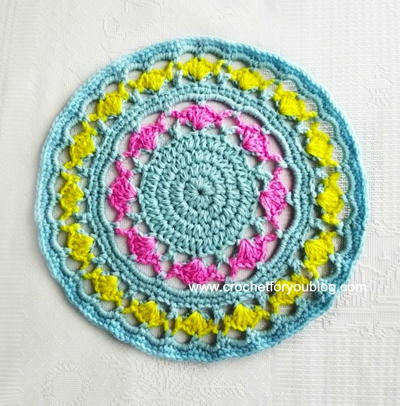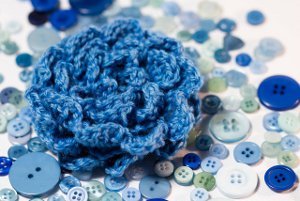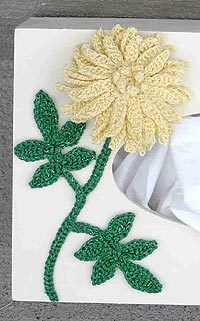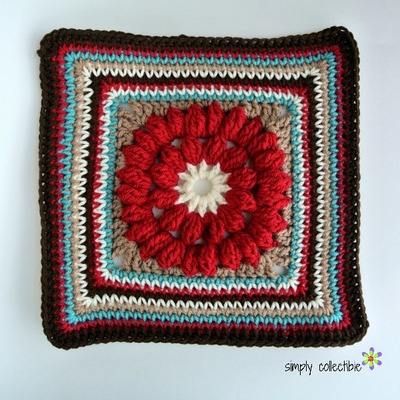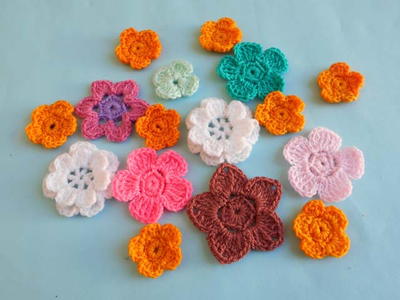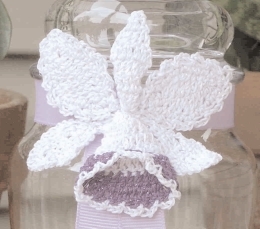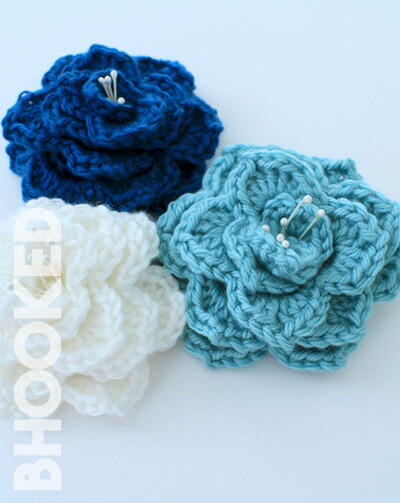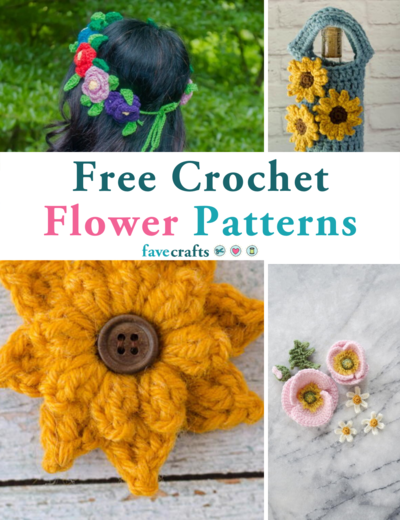Choose Crochet Flowers Instead of Cut
Recently, I have become enamored with free crochet flower patterns as a way to decorate the home and embellish just about anything. Crochet flowers add the finishing touch to bags, jackets, hats and more, whether these items are homemade through crafting or store-bought. With a small amount of scrap yarn, a spare hour or two and my favorite free crochet flower patterns, I can create beautiful little bursts of color in no time.
I have never really understood why cut flowers are the definitive token of affection, celebration and amends. Why watch something beautiful inevitably wither and die? While many of my girlfriends have demanded regular flower bouquets from their significant others, I have requested books, chocolates and wine. I have also never viewed cut flowers as a realistic or attractive way to decorate my home. In my opinion, crochet flowers are the much better option and not just because they are homemade.
The advantages of crochet flowers over cut become more evident when we look at the environmental impact of the industry. The cut flower industry here in America is giant, with consumers purchasing around 6.4 billion dollars worth of stems and bouquets each year. Cut flowers sold in America are almost entirely imported from greenhouses in South America and must be refrigerated throughout their long journey. With the carbon emissions produced by flower production, transportation, distribution and constant refrigeration for up to 10 days, a cut flower bouquet has a huge carbon footprint.
Hardly requiring extensive transportation, crochet flowers can be made inside the home with free crochet flower patterns or purchased from a local crafter. Crochet lovers can purchase yarn for crochet flowers from local craft stores or ideally from independent yarn spinners. Etsy provides a good resource for finding yarn spinners near you. Many big-name yarn manufacturers also produce environmentally friendly yarns made from sustainable resources such as bamboo, soy silk and hemp. These yarns are also a good choice when trying to reduce your personal carbon footprint.
Unlike cut flowers, crochet flowers do not require dangerous chemicals for their production. Pesticides, fertilizers and other chemical agents are used extensively in the production of cut-flowers imported to the U.S., almost 80% of which come from Columbia or Ecuador. In fact, flower greenhouses in these countries use chemicals deemed too toxic for use within the U.S. or E.U, such as infamous DDT. According to a 2007 study from the International Labor Rights Fund, more than 66 percent of Ecuadorian and Colombian flower workers suffer from work-related health problems stemming from prolonged exposure to toxic pesticides and fungicides.
Cut flowers are hardly an innocent gesture of love and appreciation, unless they happen to come from your own garden. Instead of cut-flower bouquets, people can make crochet flower bouquets to give as gifts or decorate their own homes. Crochet flowers satisfy the need for color, but are guilt-free. With free crochet flower patterns and a touch of craftiness, crochet flowers can save you loads of money too. I’ll be making a cheerful bouquet of daisies for my kitchen.
Resources:
Armshaw, William. The Environmental Impact of Cut Flower Imports. [pdf--no longer available online]
Thomas, Pat. “Behind the label: cut flowers.” The Ecologist. 18 Aug, 2009.

